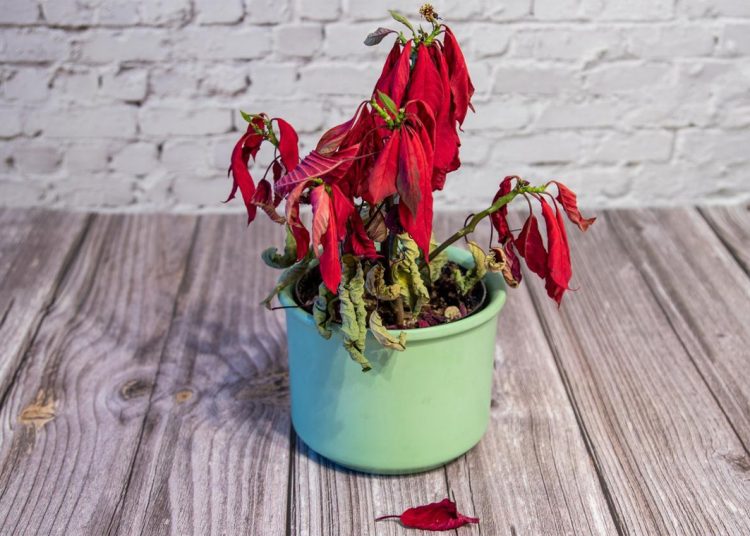Poinsettias are a staple of holiday decor, known for their vibrant red, pink, and white bracts. However, once the festive season ends, many people are left wondering how to keep their poinsettia alive, especially since it’s common for these plants to lose their color and vitality after blooming. But don’t despair—if you’re committed to reviving your poinsettia, with the right care, it’s possible to bring it back to life and even get it to bloom again next season.
Here’s a step-by-step guide on how to revive a poinsettia and give it the best chance for a healthy return.
10 steps to revive poinsettia
1. Assess the Plant's Health
Before you begin the revival process, it’s important to assess the health of your poinsettia. Check for any signs of overwatering, underwatering, pests, or diseases. The leaves should be firm and green, and the stems should be solid. If the plant is severely wilted or the leaves have turned brown and crispy, it may be harder to revive, but don’t give up hope—sometimes, a little care is all it needs to bounce back.
2. Trim Back the Plant
Once the holiday season is over and your poinsettia has finished blooming, it's time to trim it back. Using clean, sharp scissors or pruning shears, cut the stems of the poinsettia back to about 4-6 inches above the soil line. This will encourage new growth and help the plant focus its energy on producing healthy stems and leaves instead of trying to sustain spent blooms. Be sure to remove any dead or diseased leaves as well.
3. Re-pot (If Necessary)
If your poinsettia has outgrown its pot or the soil looks depleted, consider re-potting it into a slightly larger container with fresh, well-draining potting soil. Choose a pot with drainage holes to prevent water from accumulating at the bottom and causing root rot. Re-potting isn’t always necessary, but it can provide the plant with a healthier growing environment.
4. Provide Proper Light
Poinsettias require bright, indirect light to thrive. After trimming back the plant, place it in a location where it will receive plenty of indirect sunlight, such as near a south- or west-facing window. Avoid direct sunlight, which can cause the leaves to scorch, and keep it away from drafts, air conditioning vents, or heaters, as extreme temperature fluctuations can stress the plant.
5. Water Properly
One of the most common mistakes people make with poinsettias is overwatering or underwatering. It’s important to maintain consistent moisture in the soil without letting the plant sit in water. Water your poinsettia when the top inch of soil feels dry to the touch. When you water, ensure the excess water drains out of the bottom of the pot. If the plant is sitting in a saucer, empty any excess water to prevent root rot.
6. Fertilize During the Growing Season
To encourage new growth, begin fertilizing your poinsettia once you see new shoots emerging. Use a balanced, water-soluble fertilizer that’s specifically formulated for houseplants. Apply the fertilizer every 4-6 weeks during the growing season, which typically lasts from spring to summer. Avoid fertilizing during the winter months when the plant is in a semi-dormant state.
7. Prune Regularly
Throughout the growing season, prune your poinsettia regularly to keep it compact and encourage branching. Pinch back the growing tips of the stems to promote bushier growth. Be sure to remove any dead or damaged stems as they appear. Regular pruning also helps the plant stay healthy and free of pests.
8. Inducing Bloom for the Next Holiday Season
If you’re hoping to bring your poinsettia back to life and have it bloom again next holiday season, it will require special care. Poinsettias are "short-day" plants, meaning they need at least 14 hours of complete darkness each day for about 6 weeks in order to bloom. This period typically starts in late September or early October. During this time:
- Place the plant in a dark room or cover it with a box each evening to ensure it gets the necessary darkness.
- During the day, move the plant back to a location with bright, indirect light.
- After 6 weeks, you can resume normal care and the plant should begin to show signs of blooming.
9. Monitor for Pests
Like all houseplants, poinsettias can be susceptible to pests, such as aphids, mealybugs, or spider mites. Regularly inspect the leaves and stems for any signs of infestation. If you notice pests, gently wipe them off with a damp cloth or use an insecticidal soap to treat the plant. Be sure to follow the directions carefully to avoid harming the plant.
10. Patience is Key
Reviving a poinsettia can take time, so patience is essential. It may take several months for the plant to regrow and regain its strength. By consistently following the proper care regimen and giving the plant the right environment, you should start to see new growth within a few weeks.
















